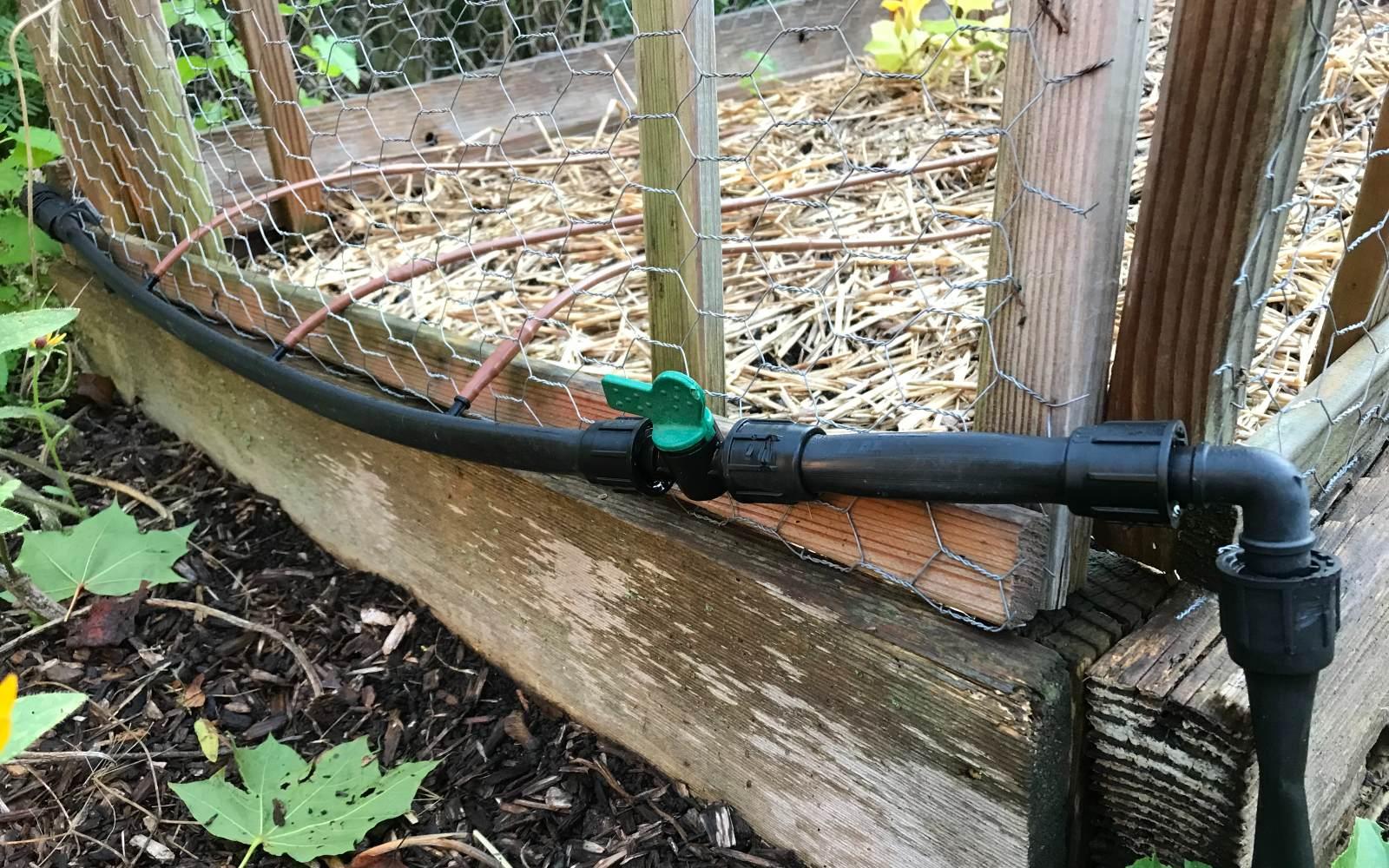Don’t let periods of plentiful rains fool you. The Maryland growing season can get pretty dry, especially July through September when we expect to harvest those much-anticipated tomatoes, peppers, and melons. Make a plan now for how you can get water to your vegetable and fruit plants when Mother Nature is not cooperating.
Drip irrigation
Drip irrigation, also known as trickle irrigation, has many advantages for the home gardener. It is very efficient compared to overhead watering methods because 90%-95% of the water goes into the soil. Therefore, less water is required to fully wet the root zone. Walkways stay dry, allowing you to work in your garden at any time without worry about muddy shoes, and plant foliage remains dry, preventing disease problems. Furthermore, drip irrigation systems can be easily and inexpensively controlled with automatic timers (mechanical or battery-operated).
Complete starter kits for an average backyard garden can be purchased for $30-$40. Check local garden centers and on-line companies, such as Drip Works, The Drip Store, and Drip Depot. The drip tape that delivers the water directly to the soil can be re-used if care is taken and it is stored out of the sunlight and away from rodents. The filter, pressure regulator, and connectors should last for many years.
Drip irrigation systems work off low water pressure, 8-10 psi. A simple filter, with a removable strainer, is first connected to the water bib followed by a pressure regulator. A header is laid along the top of each row or bed, and individual drip lines or drip tape (“T-tape” is one particular brand) are connected to the header and deliver water from special pressure- compensating “zipper” emitters inside the flat tubing. A single drip line will irrigate a row of plants. For wide beds, drip lines are usually spaced 18-24 inches apart; 9-12 inches apart on coarse soils high in sand (these soils will drain more freely and are more difficult to wet thoroughly). The drip tape can be left on top of the soil (emitter side up) or buried. If left on top, it’s a good practice to cover the drip tape with a mulch.
Drip systems deliver about ½ gallon of water per minute per 100’ of drip tape. It can take as little as 2-3 hours and as long as 24 hours to thoroughly wet the root zone. It all depends on soil type, temperature, crop, and spacing of drip tape. Municipal water is fine to use but make sure you have some type of backflow check valve to prevent contamination of the water source. Voles love to chew on the plastic tubing so store drip irrigation kits indoors or outdoors in a metal container.
Think about the very dry summers we had in the past 10 years. Even when rainfall is close to normal during the growing season, your garden will be much more productive if you can irrigate on a regular basis.
